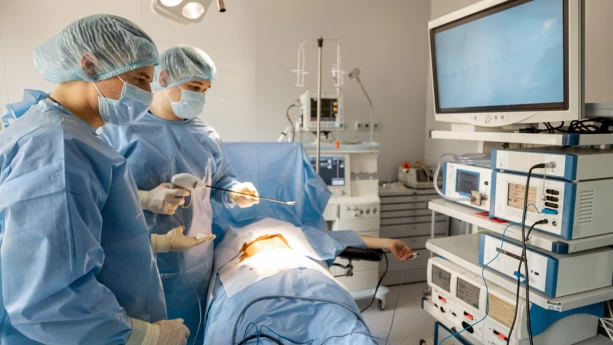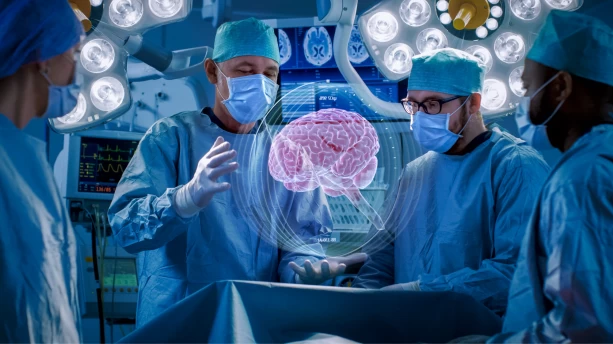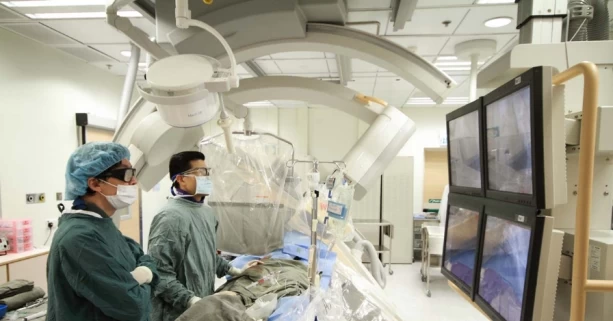Nghiên cứu lâm sàng

Abstract
The tissue integration and the formation of adhesions in the repair of abdominal wall defects are principally led to the topology and the mechanical properties of implanted prosthesis. In this study we analyzed the influence of the topology of the meshes for abdominal wall repair, made of polypropylene (PP), evaluating its ability to prevent and to minimize the formation of adhesions, and to promote tissue ingrowth. Two series of in vivo studies were performed. In the first, two types of PP meshes, a lightweight macroporous mesh (LWM) and a heavyweight microporous mesh (HWM) were compared with determine the optimal porosity for tissue integration. In the second, a composite mesh, Clear Mesh Composite (CMC), made of a LWM sewn on a PP planar smooth film, was compared with a PP planar film, to demonstrate how two different topologies of same material are able to induce different tissue integration with the abdominal wall and different adhesion with internal organs. In both studies, the prostheses were implanted in Wistar rats and histological analysis and mechanical characterization of tissue coupled with the implants were performed. LWM showed better host tissue ingrowth in comparison to HWM. CMC prosthesis showed no adhesions to the viscera and no strong foreign body reaction, moreover its elasticity and anisotropy index were more similar to that of natural tissue. These results demonstrated that the surface morphology of PP surgical meshes allowed to modulate their repair ability. © 2015 Wiley Periodicals, Inc. J Biomed Mater Res Part B: Appl Biomater, 104B: 1220-1228, 2016.
Keywords: histological analysis; in vivo study; mechanical properties; polypropylene mesh; surface morphology.
Xem thêm
Abstract
Outcome of primary and incisional hernia repair is still affected by clinical complications in terms of recurrences, pain and discomfort. Factors like surgical approach, prosthesis characteristics and method of fixation might influence the outcome. We evaluated in a prospective observational study a cohort population which underwent primary and incisional laparoscopic hernia repair, with the use of a composite mesh in polypropylene fixed with absorbable devices. We focused on assessing the feasibility and safety of these procedures; they were always performed by an experienced laparoscopic surgeon, analyzing data from our patients through the EuraHS registry. Seventy nine procedures of primary and incisional hernia repair were performed from July 2013 to November 2015 at Santa Maria Regina degli Angeli Hospital in Adria (RO). All cases have been registered at the EuraHS registry ( http://www.eurahs.eu ); among them, we analyzed 29 procedures performed using a new composite polypropylene mesh (CMC, Clear Composite Mesh, DIPROMED srl San Mauro Torinese, Turin, Italy), fixed with absorbable tackers (ETHICON, Ethicon LLC Guaynabo, Puerto Rico 00969). We performed 23 incisional hernia repairs, 4 primary hernia repairs (1 umbilical, 2 epigastric and 1 lumbar hernia) and 2 parastomal hernia repairs. The median operation time was 65.1 min for elective and 81.4 min for urgent procedures (three cases). We had two post-operative complications (6.89%), one case of bleeding and another case of prolonged ileus successfully treated with conservative management. We had no recurrences at follow-up. According to QoL, at 12 months patients do not complain about any pain or discomfort for esthetic result. Laparoscopic treatment of primary and incisional hernia with the use of composite mesh in polypropylene fixed with absorbable devices is feasible and safe.
Keywords: Abdominal hernias; Absorbable tackers; Laparoscopy.
Xem thêm
Abstract
We describe the laparoscopic management of diaphragmatic hernia (DH) caused by vertebral pedicle screw displacement. A 58-year-old woman underwent surgery for scoliosis and underwent posterior pedicle screw fixation. In the first postoperative (PO)day, she developed mild dyspnea. An anteroposterior chest radiograph revealed bilateral pleural effusion, which was more pronounced on the left side. A thoracoabdominal computed tomography (CT) scan, performed in the second PO day, revealed a solid mass in the pleural cavity that was associated with screw displacement, which had also entered into the peritoneal cavity without apparent other lesion of hollow and solid viscous. In the third PO day, after the screw was removed, explorative laparoscopy was carried out. We observed herniation of the omentum through a small diaphragmatic tear. Once the absence of visceral injury was confirmed, we reduced the omentum into the abdomen. Then, we repaired the hernia by applying a dual layer polypropylene mesh over the defect with a 3-cm overlap. The remainder of the postoperative period was uneventful. Iatrogenic DH due to a pedicle screw displacement has never been described before. In cases of pleural effusion following spinal surgery, rapid assessment and treatment are crucial. We conclude that a laparoscopic approach to iatrogenic DH could be feasible and effective in a hemodynamically stable patient with negative CT findings because it enables the completion of the diagnostic cascade and the repair of the tear, providing excellent visualization of the abdominal viscera and diaphragmatic tears.

Abstract
Aims: The industrial development of a product requires performing a deep analysis to highlight its characteristics useful for future design. The clinical use of a product stimulates knowledge improvement about it in a constant effort of progress. This work shows the biological characterization of CMC composite mesh. CMC polypropylene prosthesis was seeded with Human fibroblast BJ. Samples (cells and medium) were collected at different time points in order to perform different analysis: inflammatory markers quantification; collagens immunohistochemistry; matrix metalloproteinases zimography; extracellular matrix proteomic profile.

Abstract
Hernias are generally repaired using synthetic prostheses. Infection may already be present or develop during implantation. Based on the increasing resistance to antibiotics, and the well-known antimicrobial properties of silver (Ag), the possibility of coating hernia prostheses with a nanostructured layer containing Ag was explored. Prostheses (Clear Mesh Composite [CMC]) made up of two polypropylene layers (macroporous light mesh and thin transparent film) were tested with human mesothelial cells from omentum biopsies. Mesotheliocytes modulate abdominal wall healing producing cytokines, growth factors, and adhesion molecules. Evaluating the growth of these cells on CMC or film alone showed that cell numbers on CMC increased over time, and were higher than those on film alone. Vimentin immunostaining confirmed the cells to be mesotheliocytes. Subsequently, the biocompatibility of mesh layer, coated or not with a thin layer of Ag/SiO2 -nanoclusters, was analyzed, showing no difference in absence or presence of Ag/SiO2 . Differently, TGF-β2 production, involved in tissue repair and fibrosis, increased in the presence of Ag/SiO2 . Moreover, Ag/SiO2 -coated mesh showed antibacterial properties. In conclusion, the mesh layer coated with Ag/SiO2 afforded cell growth, and showed antibacterial activity. Coating only the mesh layer did not decrease film transparency, and did not favor the formation of adhesions on the visceral side. © 2016 Wiley Periodicals, Inc. J Biomed Mater Res Part B: Appl Biomater, 105B: 1586-1593, 2017.


